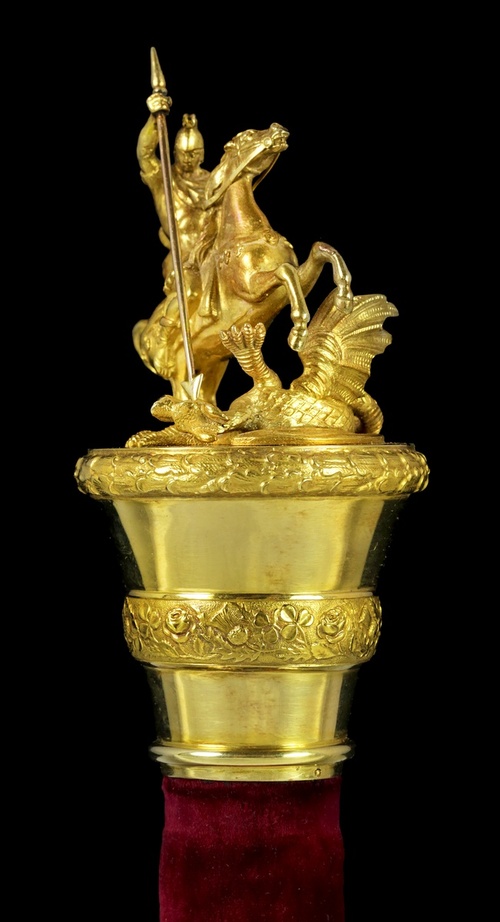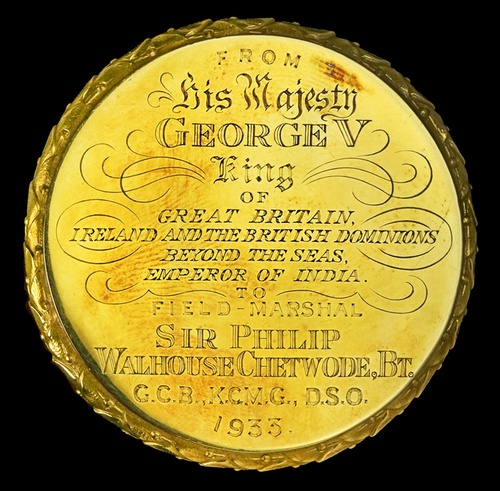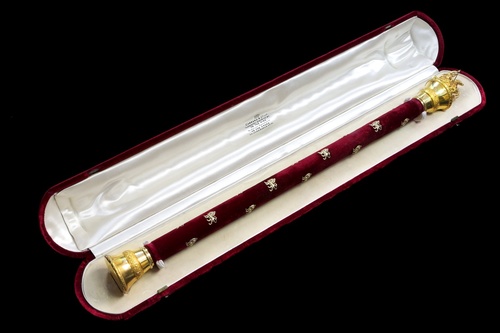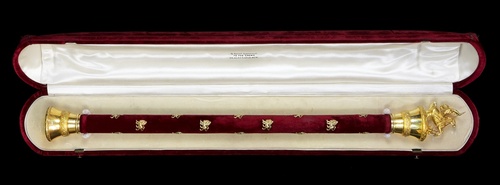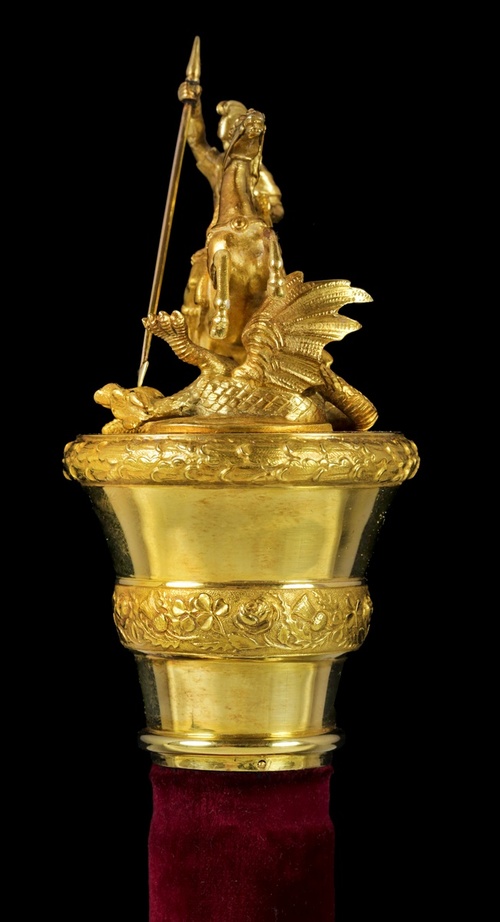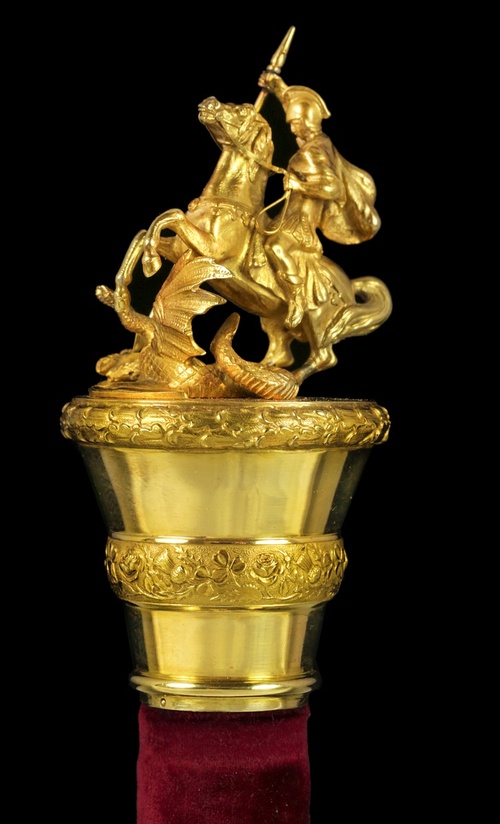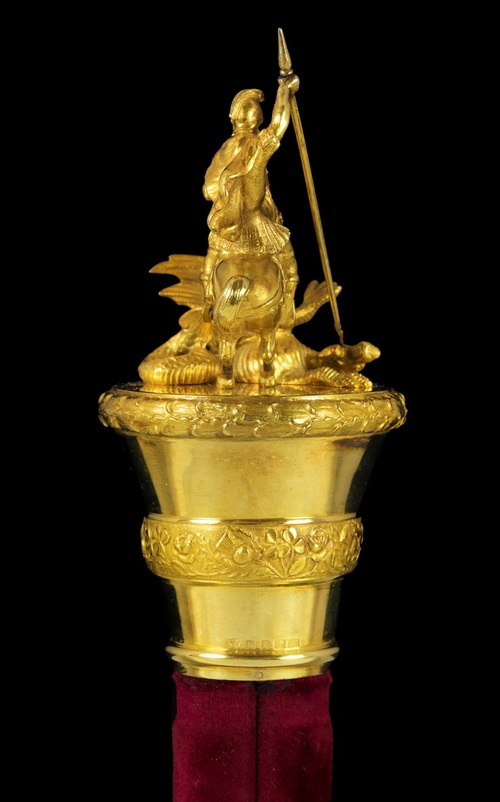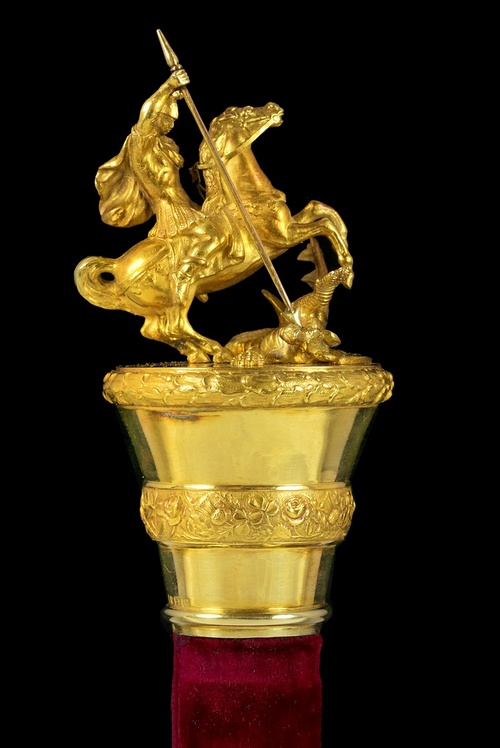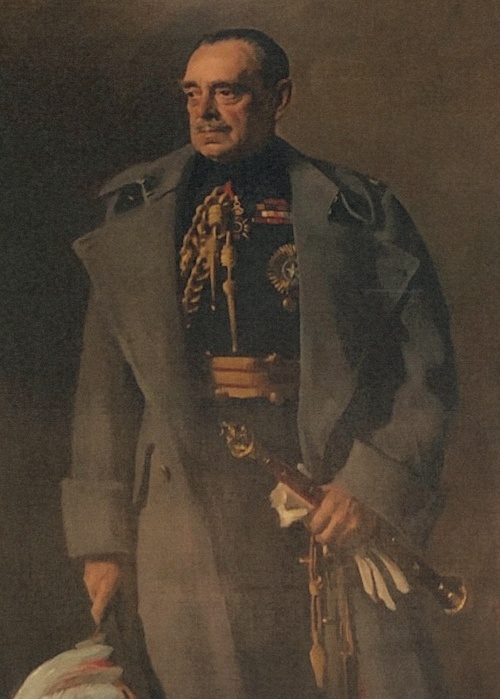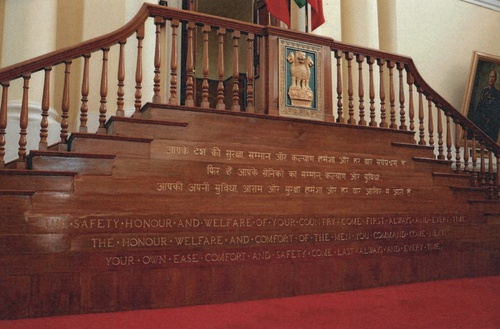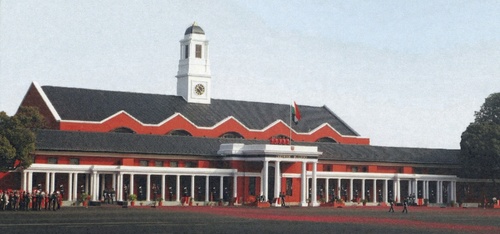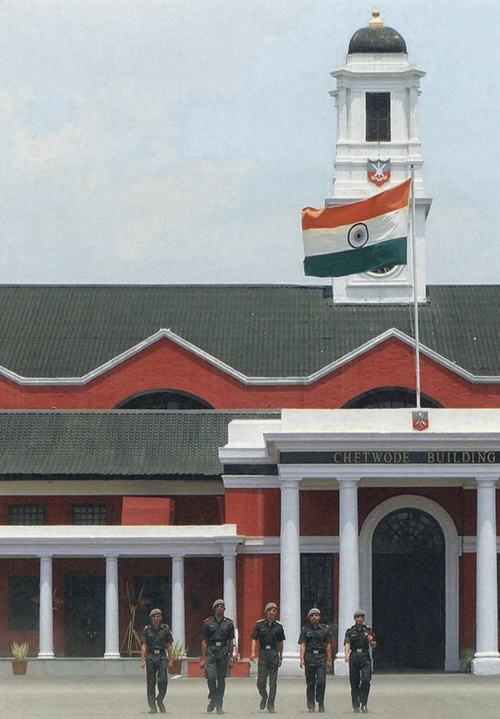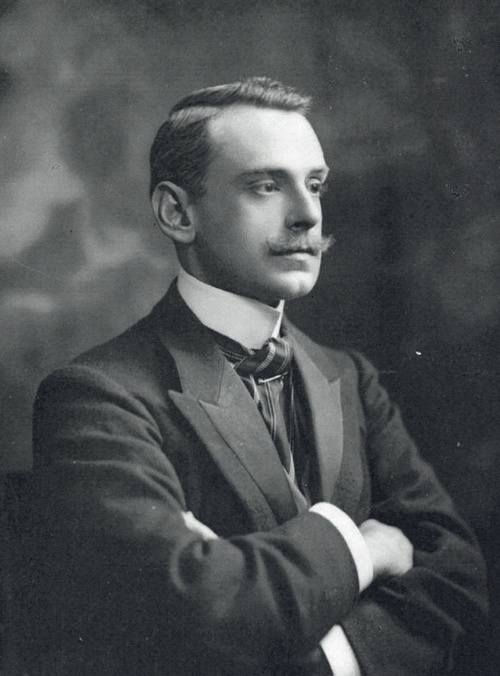Auction: 19001 - Orders, Decorations and Medals
Lot: 509
FIELD MARSHAL
SIR PHILIP WALHOUSE CHETWODE Bart., 1st BARON CHETWODE,
GCB, OM, GCSI, KCMG, DSO (1869-1950)
The safety, honour and welfare of your country come first, always and every time.
The honour, welfare and comfort of the men you command come next.
Your own ease, comfort and safety come last, always and every time.
Chetwode's famous dictum, terminating a speech to cadets when inaugurating the Indian Military Academy Dehra Dun on 10th December 1932, is literally carved into the fabric of that Academy. The dictum represented not only Chetwode's personal belief but also the time-honoured principles of officers in the British and British-Indian armies. It remains no less valid and respected today for the Army of the Republic of India, whose officers still train at the IMA Dehra Dun.
Scion of an ancient Buckinghamshire family, baronets since 1700, Philip Walhouse Chetwode entered the Army via the 3rd (Militia) Battalion, Oxfordshire Light Infantry in 1888, transferring in 1889 to 19th (Princess Alexandra's Own) Hussars. The 19th arrived at Bangalore in 1891 and in 1892 Lieutenant Chetwode accompanied a punitive expedition to the Chin Hills in Burma.
Lieutenant-Colonel John French was his first commanding officer. French, later Field Marshal and 1st Earl of Ypres, was widely regarded at the time as the 'coming man' in terms of cavalry tactics and Chetwode's qualities clearly took his eye. Chetwode obtained his captaincy in 1897 and accompanied his regiment to South Africa for the 2nd Boer War in 1899. Serving at the Defence of Ladysmith and in most theatres of the war, he emerged from it with a DSO and the enhanced approbation of French, who had commanded the Cavalry Division. His star clearly in the ascendant after the war, he inherited the Baronetcy in 1905, was appointed French's Assistant Military Secretary in 1906 and obtained command of his regiment in 1908. The 19th Hussars was part of 4th Cavalry Brigade, commanded at the time by Edmund Allenby who, like French, was impressed by Chetwode.
The outbreak of war in 1914 found Chetwode in command of 5th Cavalry Brigade, within the Cavalry Division commanded by Allenby; it covered the retreat from Mons and the subsequent advance from the Marne. His effectiveness in that role being recognised by French - then commanding the British Expeditionary Force, Chetwode was given command of 2nd Cavalry Division in July 1915. As the war in Flanders settled into the stalemate of the trenches, Chetwode might have been remembered by history as one of those caricature cavalry generals frustrated by their inability to deploy cavalry in its traditional role. Fortunately for his career and reputation, this was not to be since, at the end of 1916, he was posted to the one theatre of the war that still offered great potential for the mounted arm: the Middle East.
The Palestine campaign was to elevate Chetwode from just another General, albeit with great promise, to one marked for very senior rank and position. When he arrived in Egypt early in December 1916, the groundwork had been laid for an advance by the Egyptian Expeditionary Force (EEF) eastward into Turkish Palestine. Chetwode was appointed to command the Desert Column in the vanguard of the advance. The core of the Column comprised Australian Light Horse, British Yeomanry and New Zealand Mounted Rifles regiments, all of which fought as mounted infantry. This force enjoyed early success at Magdhaba and then at Rafah, on the approach to Gaza, but concerns about water for the horses and lack of intelligence about actual Turkish strength occasionally made Chetwode cautious. In hindsight, such caution may have been unnecessary but then, as Chetwode wrote in 1940, 'Generals are always marvels if they win a battle and always fools if they lose one … so it is hardly remarkable that … they may appear to err on the side of caution'. The three battles for Gaza are covered elsewhere in this catalogue, the eventual capture of Gaza in October 1917 following the appointment of Allenby to command the EEF in June. On arrival in theatre, Allenby was presented by Chetwode with a plan aimed at resolving the impasse before Gaza and proposing subsequent operations towards Jerusalem. Part of Allenby's reorganisation of the EEF was to appoint Chetwode to command XX Corps, containing four infantry divisions. Basing his strategy upon Chetwode's plan, Allenby's campaign was marked by almost continual success, a success that Allenby duly recorded as being 'largely due' to Chetwode's, 'strategical foresight and tactical skill'. These talents of Chetwode's were widely recognised: Archibald Wavell - later Field Marshal and 1st Earl Wavell, who served on Chetwode's staff in 1918 - recorded in about 1936 that Chetwode, '… had about the best and quickest military brain I have known, an extremely good tactical eye for ground and a great gift for expressing a situation clearly and concisely …'.
Chetwode remained in the Middle East until May 1919, leaving as a substantive Lieutenant-General, KCB and KCMG, to be appointed Military Secretary to the Secretary-of-State for War, Winston Churchill. Appointed Deputy Chief of the Imperial General Staff in 1920, he was Adjutant-General 1922-23, C-in-C. Aldershot 1923-27 and promoted General in 1926. In 1928, the final phase of his active service career began: he was appointed Chief of the General Staff, India.
The India to which Chetwode returned had greatly changed since his departure in 1899. Politically, the 1920s had been marked by growing calls for self-government. Militarily, the Indian Army had been radically reorganised, reduced in size and budget and was increasingly the target of calls by nationalist politicians for the 'Indianisation' of its officer-corps. The Indian Army had always drawn a significant number of its officers from among the indigenous population but, generally, such officers had not risen above the rank of company commander and were always subordinate to British officers. Gradually, during the 1920s, this changed. Indians were admitted to Sandhurst, in limited numbers, and a Cadet College was established at Dehra Dun as a kind of pre-Sandhurst. At the same time, falteringly and slowly, the 'Indianisation' of the army increased. After two years as CGS India, during which he was advanced to GCB, Chetwode was appointed Commander-in-Chief, India. Almost immediately upon appointment, he was ordered to chair a committee tasked with the creation of an 'Indian Sandhurst' - to produce Indian officers for all branches of the Indian Army. The Committee assembled in Simla late in May 1931 and published its report less than two months later. The Indian Military Academy Dehra Dun was the result. Its main building was (and still is) called 'The Chetwode Building' in honour of the C-in-C India who had driven through its creation and who inaugurated it in December 1932 with the ringing words at the beginning of this essay.
Chetwode spent five years as C-in-C India, being promoted Field Marshal in 1933 and appointed GCSI in 1934; on his return home he was appointed to the Order of Merit. In dealing with nationalist politicians in India and cost-cutting ones in Britain, he deployed diplomatic skills that were as remarkable as the military ones for which he was better-known. At the same time, he instituted changes in the Indian armed services that lasted until 1947, many of which - like the IMA Dehra Dun - have stood the test of time. It is difficult to argue with the assessment of his incumbency as C-in-C India printed in The Times following the announcement of his retirement:
'Surely India never had a better Commander-in-Chief, no Viceroy a more admirable colleague, no Army a more inspiring leader.'
Chetwode had fifteen more years of a long life to live after his return from India. The welfare of ex-servicemen, typically, involved him greatly and during the Second World War he chaired the executive committee of the joint Red Cross and St John war organisation while also, 1943-48, serving as Constable of the Tower of London, besides being the longest-served Chairman of the Cavalry & Guards Club. His war service was rewarded by conferment of a Barony in 1945 and the bestowal of several foreign Orders of Chivalry from Allied nations.
Soly by Order of a Direct Descendent
The Field Marshal's Baton awarded to Sir Philip Walhouse Chetwode, Bart., 1st Baron Chetwode
Field Marshal's Baton, 550mm, by S. J. Garrard, gold (18 carat, Hallmarks for London 1932) top and bottom mounts, the main baton covered in Imperial purple velvet and studded with eighteen gold lions, the base inscribed 'From His Majesty King George V King of Great Britain, Ireland and the British Dominions Beyond the Seas, Emperor of India. to Field Marshal Sir Philip Walhouse Chetwode, Bt. G.C.B., K.C.M.G., D.S.O. 1933.', surmounted by a superbly modelled gold equestrian figure of St. George slaying the Dragon, the velvet with light wear, traces of repair to lance, otherwise extremely fine, in its slightly damaged velvet-covered case of issue
This Field Marshal's Baton represents the recipient's only surviving Honour. Following his death in 1950, his other Honours and Awards were entered into a London deposit box, which was raided by the conclusion of the decade. This Baton was the only item retained by the family and thus, the only item to have survived.
Subject to 20% VAT on Buyer’s Premium. For more information please view Terms and Conditions for Buyers.
Sold for
£77,000

